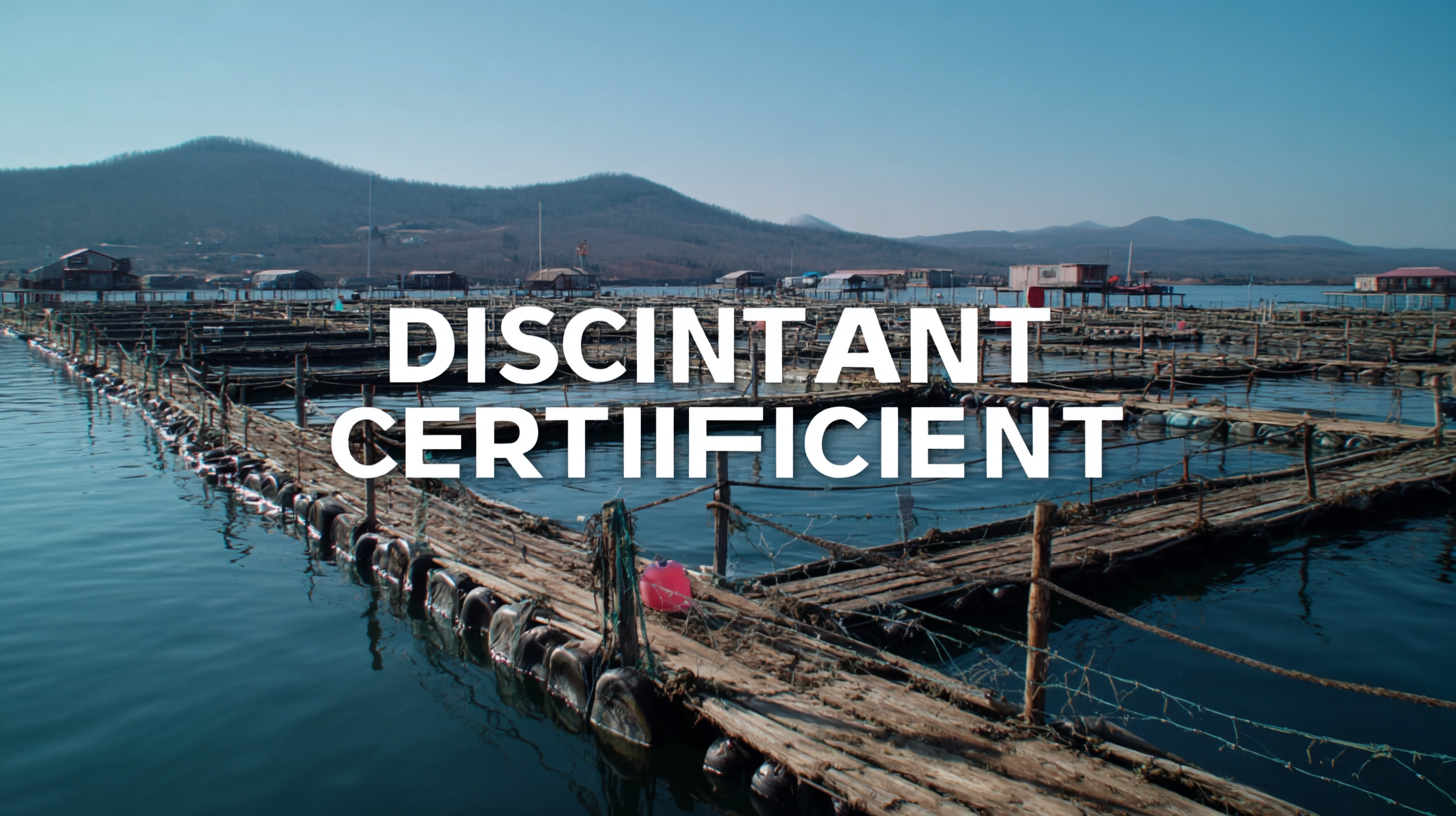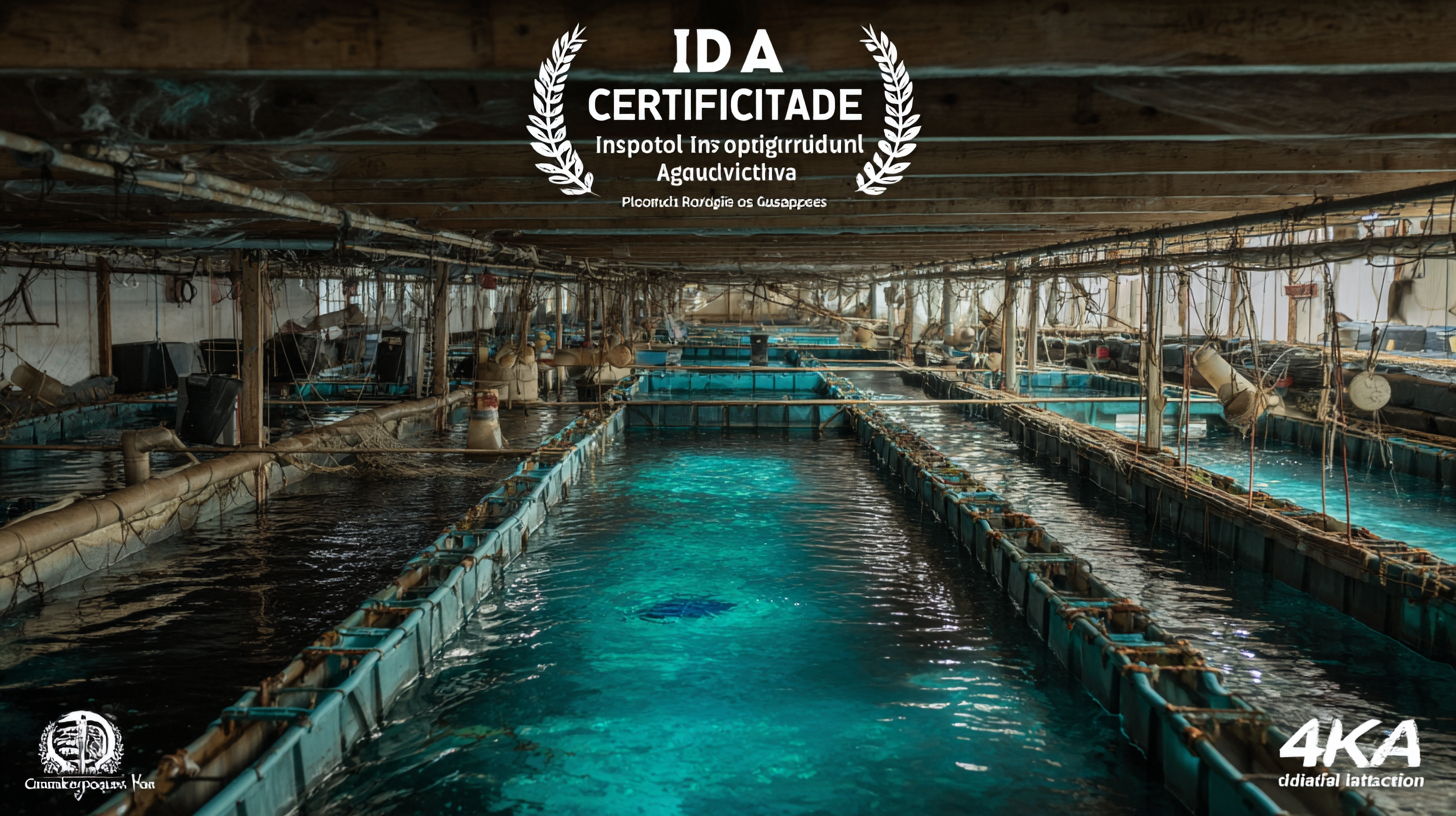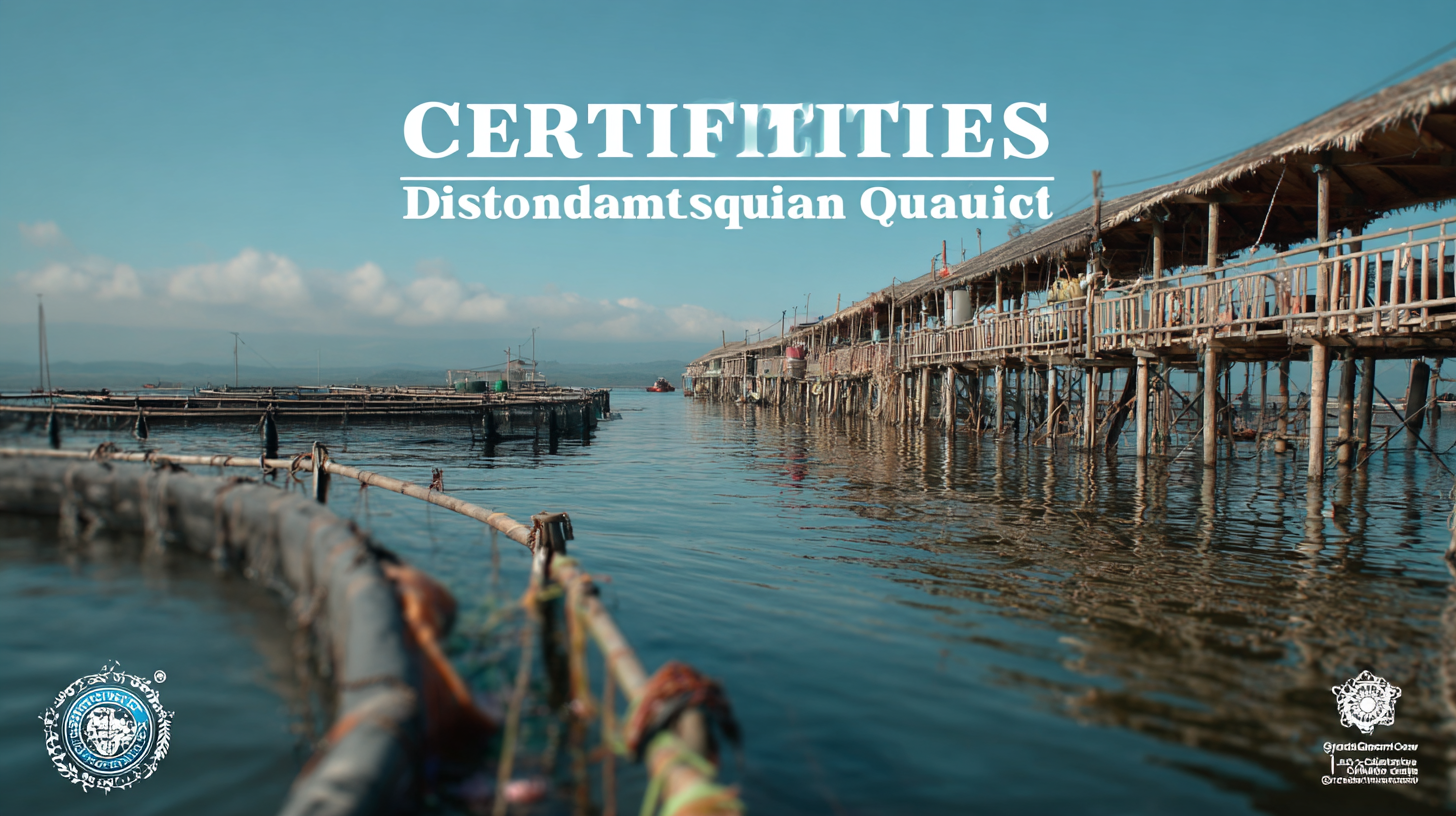In the rapidly evolving field of aquaculture, the significance of effective disinfectants cannot be overstated. According to the FAO's 2021 report on aquaculture health management, the global aquaculture production reached over 114 million tons, emphasizing the critical need for high-quality disinfectant solutions to prevent disease outbreaks and ensure sustainable practices. Disinfectant for aquaculture plays a pivotal role in safeguarding aquatic species from pathogens, thus securing the health of fish stocks and the livelihoods of farmers. However, navigating the complex landscape of import-export certifications for these disinfectants can be daunting, given the varying regulations across countries. A comprehensive understanding of certification requirements is essential for aquaculture businesses aiming to source and utilize the best disinfectants effectively while adhering to legal standards. This ultimate guide will equip aquaculture professionals with the knowledge necessary to successfully navigate these regulatory frameworks.

In the aquaculture industry, the significance of import-export certifications cannot be overstated. These certifications serve as crucial quality assurance mechanisms, allowing businesses to demonstrate compliance with international standards. For disinfectants, which play a vital role in maintaining aquatic health and biosecurity, having the right certifications is essential for both legal compliance and market acceptance. Regulatory agencies establish these certifications to ensure that products are safe, effective, and environmentally friendly, thus protecting both aquatic life and consumer interests.
Furthermore, import-export certifications enhance market access and competitiveness for aquaculture businesses. In an increasingly globalized marketplace, farms seeking to export their products are often required to provide certifications that meet the importing country’s regulatory framework. Disinfectants that are not certified may lead to delays or denial of entry into foreign markets, ultimately affecting profitability and business growth. By prioritizing the acquisition of these certifications, aquaculture companies can ensure that they are not only compliant but also positioning themselves favorably within the industry's evolving landscape.
This chart illustrates the number of approved disinfectants based on various import-export certifications essential in aquaculture. Understanding these certifications helps ensure the quality and safety of disinfectants used in aquatic environments.
In the aquaculture sector, ensuring the safety and efficacy of disinfectants is paramount to maintaining healthy aquatic environments. Disinfectants are governed by various key certifications that validate their effectiveness against pathogens affecting fish and shellfish. The Environmental Protection Agency (EPA) in the United States, for instance, requires that all disinfectants used in aquaculture receive approval under the Federal Insecticide, Fungicide, and Rodenticide Act (FIFRA). This certification guarantees that the product meets stringent safety and efficacy standards, which is essential for preventing disease outbreaks that could decimate aquatic populations.
Additionally, the World Organization for Animal Health (OIE) plays a vital role in shaping standards for disinfectants in aquaculture. The OIE endorses protocols that ensure the quality of disinfectants, minimizing risks not only to aquatic life but also to human health. According to a report by theFood and Agriculture Organization (FAO), an estimated 20% of aquaculture farms worldwide suffered losses due to disease outbreaks linked to inadequate disinfection practices. Therefore, adhering to certifications from both the EPA and OIE is crucial for aquaculture farms aiming to enhance biosecurity measures and promote sustainable practices within the industry. Without these certifications, disinfectants may not achieve the required efficacy, putting the entire aquaculture supply chain at risk.
When sourcing disinfectants for aquaculture from Chinese manufacturers, verifying the authenticity of certifications is crucial to ensure the quality and safety of the products. Many suppliers may claim to adhere to international standards; however, it is essential to conduct due diligence. Start by requesting copies of their certifications, including ISO, CE, and any specific national registrations. Cross-check these with the issuing bodies or relevant regulatory authorities to confirm their legitimacy.
Tips: Always look for third-party certifications that indicate compliance with recognized standards. Additionally, check for customer reviews and testimonials about the disinfectant’s efficacy and the manufacturer’s reliability. This extra step can help mitigate risks associated with counterfeit products.
Engaging with a reliable local partner or consultant who understands the certification processes can also streamline verification. They can assist in navigating the regulatory landscape while providing insights into which certifications are most relevant to your specific requirements. By leveraging these resources, you can confidently choose a disinfectant that meets your aquaculture needs and aligns with industry best practices.
Navigating compliance with international regulations for disinfectants in aquaculture is paramount for ensuring the safety and efficacy of aquatic products. The global aquaculture industry, valued at over $250 billion as of 2022, increasingly relies on biosecurity measures to mitigate disease outbreaks. According to the Food and Agriculture Organization (FAO), the adoption of effective disinfectants can reduce pathogen load significantly, with studies indicating that proper chemical applications can decrease mortality rates in aquaculture settings by up to 30%.

However, the regulatory landscape for disinfectants varies widely across regions, necessitating a thorough understanding of local and international compliance requirements. For instance, the U.S. Environmental Protection Agency (EPA) and the European Chemicals Agency (ECHA) impose strict protocols for the approval of disinfectants, mandating extensive efficacy and safety evaluations. Failure to adhere to these regulations not only risks product efficacy but can also lead to legal liabilities and financial losses. Aquaculture operators must stay informed on certifications and ensure that the disinfectants they use meet the necessary international standards to enhance biosecurity while supporting sustainable practices in their operations.
 Selecting certified disinfectants for aquaculture is crucial for maintaining the health of aquatic organisms and preventing disease outbreaks. Distributors should prioritize products that have undergone rigorous testing and have obtained the necessary import-export certifications. These certifications not only ensure the safety and efficacy of the disinfectants but also indicate compliance with regulatory standards that govern chemical usage in farming environments. When evaluating disinfectants, distributors should look for labels that specify approval from recognized regulatory bodies, as these endorsements serve as a mark of quality and reliability.
Selecting certified disinfectants for aquaculture is crucial for maintaining the health of aquatic organisms and preventing disease outbreaks. Distributors should prioritize products that have undergone rigorous testing and have obtained the necessary import-export certifications. These certifications not only ensure the safety and efficacy of the disinfectants but also indicate compliance with regulatory standards that govern chemical usage in farming environments. When evaluating disinfectants, distributors should look for labels that specify approval from recognized regulatory bodies, as these endorsements serve as a mark of quality and reliability.
Additionally, it is essential for distributors to remain informed about the latest industry guidelines and best practices. Participating in webinars, workshops, and industry conferences are effective ways to stay updated on new disinfectant formulations and regulatory changes. Collaborating with suppliers who can provide documentation on the efficacy and safety of their products can further support informed decision-making. By carefully choosing certified disinfectants, distributors not only protect the aquatic ecosystems but also contribute to the long-term sustainability of the aquaculture industry.
